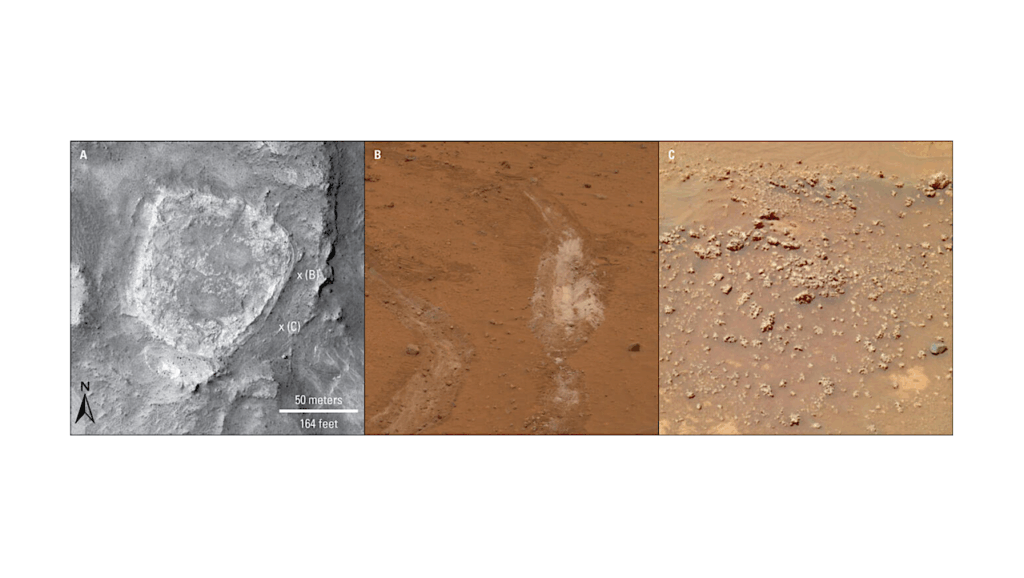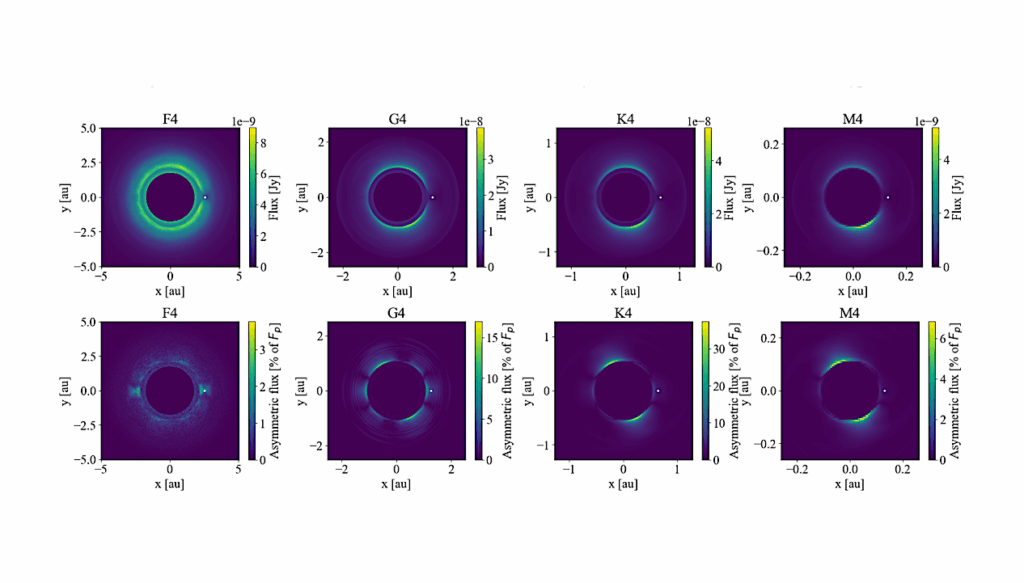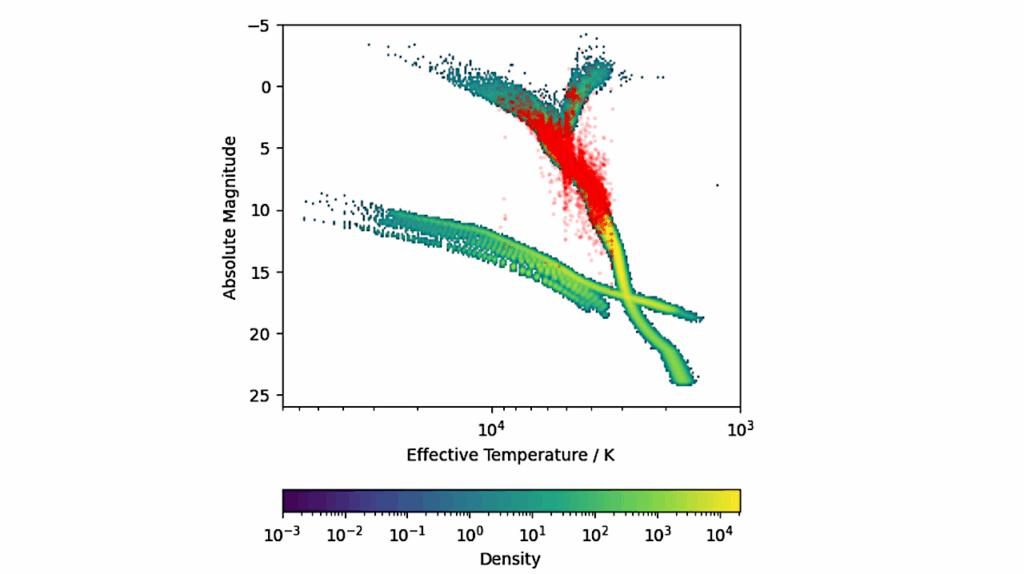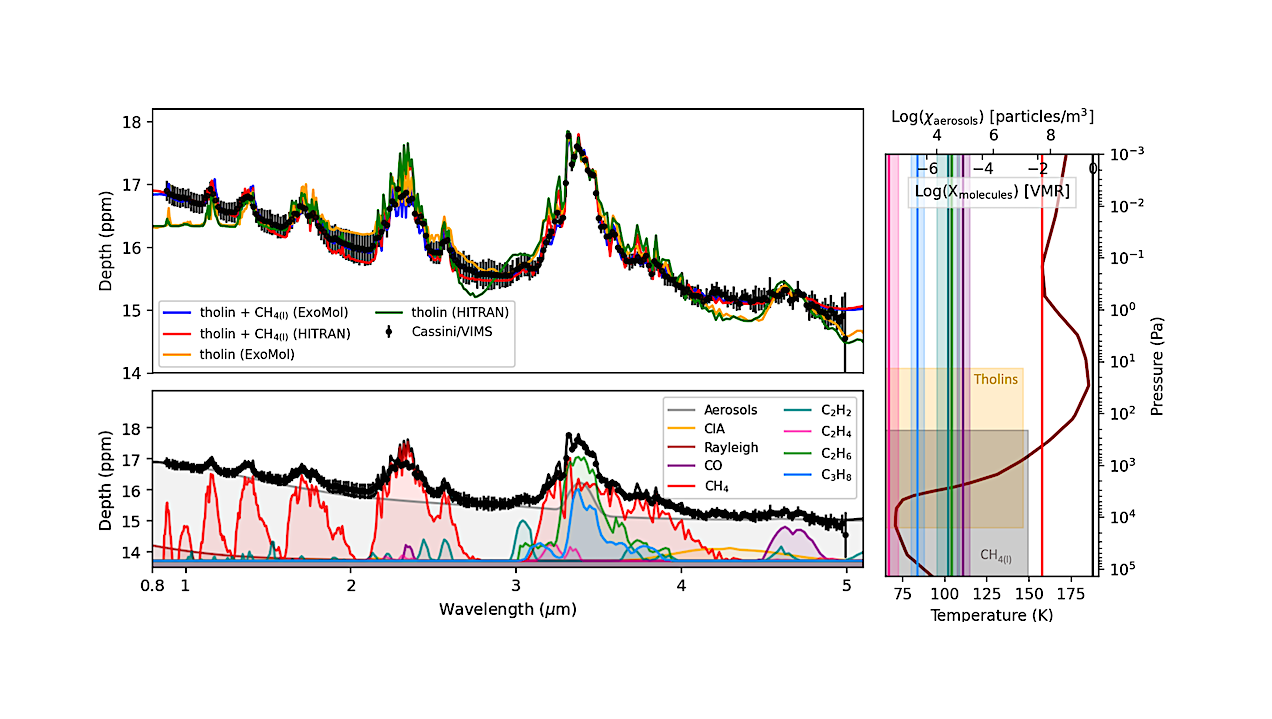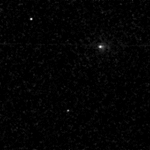Now Reading: Cold Jupiters And Small Planets: A Search For Correlations With The Largest Exoplanet Samples
-
01
Cold Jupiters And Small Planets: A Search For Correlations With The Largest Exoplanet Samples
Cold Jupiters And Small Planets: A Search For Correlations With The Largest Exoplanet Samples
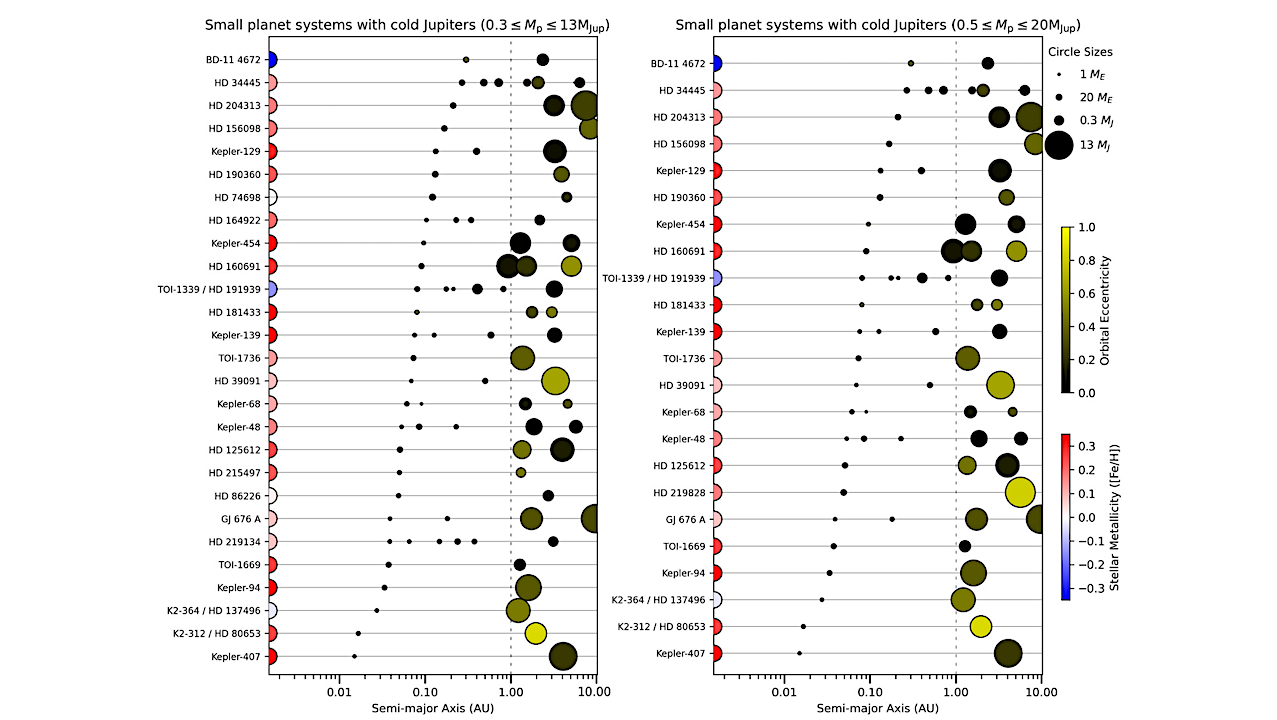

The architectures of the systems with both small planets and cold Jupiters considered in this work and ordered according to increasing semi-major axis of the innermost planet (from bottom to top). The cold Jupiters in the left (27 systems) and right (23 systems) panels have masses 0.3 ≤ Mp ≤ 13 MJup and 0.5 ≤ Mp ≤ 20 MJup, respectively, with a large overlap for cold Jupiters with 0.5 ≤ Mp ≤ 13 MJup. The planet circles have sizes proportional to their mass (see legend in the top right corner), and colors depending on the orbital eccentricity (more eccentric planets are shown in yellow). The host stars are color coded as a function of stellar metallicity (metallicity increases from blue to red). — astro-ph.EP
Finding out whether there is any correlation between the presence of short-period small planets (SPs) with P≲100 d (a≲0.4 AU) and 1<Mp<20 M⊕ and that of outer cold Jupiters (CJs) with a=1−10 AU and Mp=0.5−20 MJup around solar-type stars may provide crucial constraints on the models of formation and/or migration of SPs.
However, somehow discrepant results about the occurrence rates of CJs in SP systems have been reported in the literature, with a few recent works claiming a strong SP-CJ correlation but only at super-solar metallicity and/or mass of the host stars.
Here we homogeneously recomputed the occurrence rates of CJs at average, sub-solar ([Fe/H]<−0.1), solar (−0.1≤[Fe/H]≤0.1), and super-solar ([Fe/H]>0.1) metallicity as well as at average and sub-intervals of stellar mass, namely 0.6-0.8, 0.8-1.0, and 1.0-1.2 M⊙, with (i) a carefully-selected sample of 217 SP systems, and (ii) a large comparison sample of 1167 solar-type stars.
We determined the integrated occurrence rate of CJs in SP systems to be fCJ|SP=11.1+2.5−1.8%; this is consistent with the estimated frequencies of CJs in both the comparison sample (fCJ=9.8+0.9−0.8%) and the HARPS-N survey of transiting SP systems. We found a possible correlation (fCJ|SP>fCJ) only at super-solar mass and metallicity, though with a statistical confidence less than 3σ.
To test some theoretical predictions, we also searched for possible SP-CJ relations as a function of SP and CJ multiplicity as well as SP composition, and found none. We show that the architectures of SP systems are not indifferent to the presence of CJs as the multiplicity of SPs strongly depends on the CJ eccentricity, as expected from planetary dynamics.
A more comprehensive understanding of the relation between SPs and CJs requires larger samples of SP systems. [Abridged]
Cold Jupiters And Small Planets: friends, foes, or indifferent? A search for correlations with the largest exoplanet samples
A. S. Bonomo, L. Naponiello, E. Pezzetta, A. Sozzetti, D. Gandolfi, R. Wittenmyer, M. Pinamonti
Comments: 7 pages with 3 figures (10 tables and 8 additional figures in the Appendix); accepted for publication in Astronomy and Astrophysics
Subjects: Earth and Planetary Astrophysics (astro-ph.EP); Solar and Stellar Astrophysics (astro-ph.SR)
Cite as: arXiv:2505.20035 [astro-ph.EP] (or arXiv:2505.20035v1 [astro-ph.EP] for this version)
https://doi.org/10.48550/arXiv.2505.20035
Focus to learn more
Submission history
From: Aldo Stefano Bonomo Dr.
[v1] Mon, 26 May 2025 14:22:38 UTC (1,233 KB)
https://arxiv.org/abs/2505.20035
Astrobiology,
Stay Informed With the Latest & Most Important News
-
 012024 in Review: Highlights from NASA in Silicon Valley
012024 in Review: Highlights from NASA in Silicon Valley -
 02Panasonic Leica Summilux DG 15mm f/1.7 ASPH review
02Panasonic Leica Summilux DG 15mm f/1.7 ASPH review -
 03How New NASA, India Earth Satellite NISAR Will See Earth
03How New NASA, India Earth Satellite NISAR Will See Earth -
 04And Thus Begins A New Year For Life On Earth
04And Thus Begins A New Year For Life On Earth -
 05Astronomy Activation Ambassadors: A New Era
05Astronomy Activation Ambassadors: A New Era -
06SpaceX launch surge helps set new global launch record in 2024
-
 07Space Force plans new ‘Futures Command’ amid pressure to speed up modernization
07Space Force plans new ‘Futures Command’ amid pressure to speed up modernization












